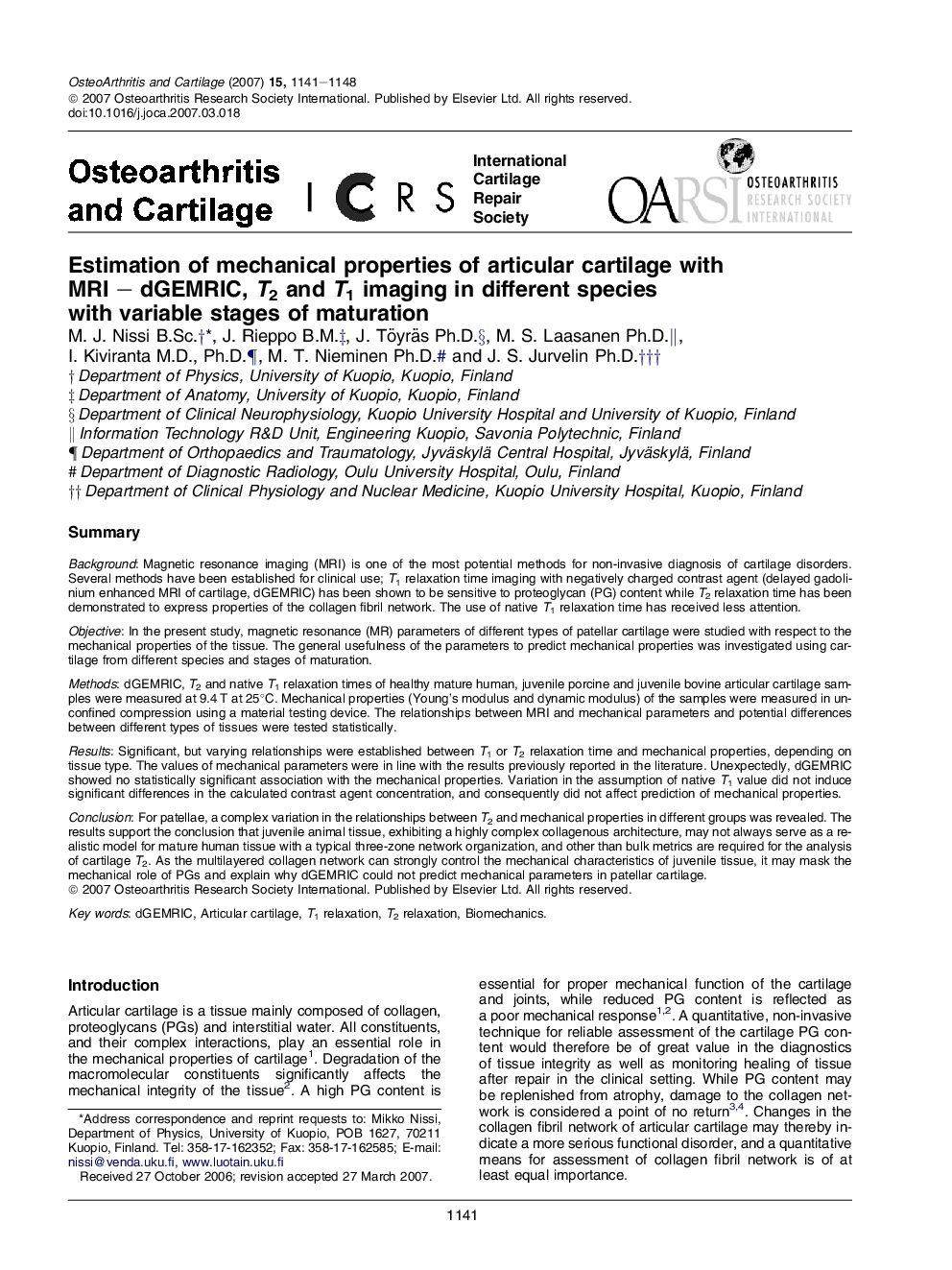| کد مقاله | کد نشریه | سال انتشار | مقاله انگلیسی | نسخه تمام متن |
|---|---|---|---|---|
| 3381343 | 1220247 | 2007 | 8 صفحه PDF | دانلود رایگان |

SummaryBackgroundMagnetic resonance imaging (MRI) is one of the most potential methods for non-invasive diagnosis of cartilage disorders. Several methods have been established for clinical use; T1 relaxation time imaging with negatively charged contrast agent (delayed gadolinium enhanced MRI of cartilage, dGEMRIC) has been shown to be sensitive to proteoglycan (PG) content while T2 relaxation time has been demonstrated to express properties of the collagen fibril network. The use of native T1 relaxation time has received less attention.ObjectiveIn the present study, magnetic resonance (MR) parameters of different types of patellar cartilage were studied with respect to the mechanical properties of the tissue. The general usefulness of the parameters to predict mechanical properties was investigated using cartilage from different species and stages of maturation.MethodsdGEMRIC, T2 and native T1 relaxation times of healthy mature human, juvenile porcine and juvenile bovine articular cartilage samples were measured at 9.4 T at 25°C. Mechanical properties (Young's modulus and dynamic modulus) of the samples were measured in unconfined compression using a material testing device. The relationships between MRI and mechanical parameters and potential differences between different types of tissues were tested statistically.ResultsSignificant, but varying relationships were established between T1 or T2 relaxation time and mechanical properties, depending on tissue type. The values of mechanical parameters were in line with the results previously reported in the literature. Unexpectedly, dGEMRIC showed no statistically significant association with the mechanical properties. Variation in the assumption of native T1 value did not induce significant differences in the calculated contrast agent concentration, and consequently did not affect prediction of mechanical properties.ConclusionFor patellae, a complex variation in the relationships between T2 and mechanical properties in different groups was revealed. The results support the conclusion that juvenile animal tissue, exhibiting a highly complex collagenous architecture, may not always serve as a realistic model for mature human tissue with a typical three-zone network organization, and other than bulk metrics are required for the analysis of cartilage T2. As the multilayered collagen network can strongly control the mechanical characteristics of juvenile tissue, it may mask the mechanical role of PGs and explain why dGEMRIC could not predict mechanical parameters in patellar cartilage.
Journal: Osteoarthritis and Cartilage - Volume 15, Issue 10, October 2007, Pages 1141–1148